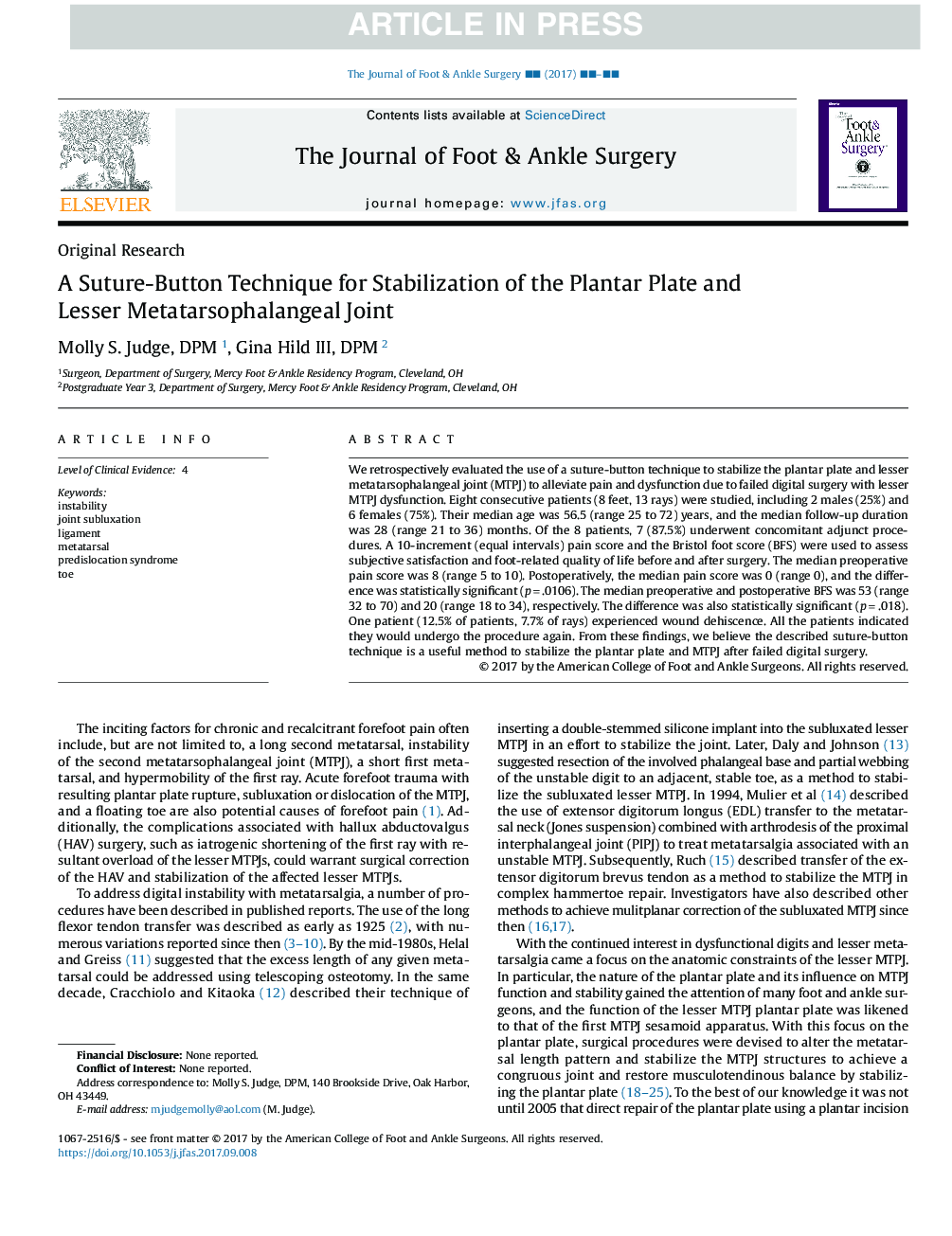| Article ID | Journal | Published Year | Pages | File Type |
|---|---|---|---|---|
| 8602815 | The Journal of Foot and Ankle Surgery | 2018 | 9 Pages |
Abstract
We retrospectively evaluated the use of a suture-button technique to stabilize the plantar plate and lesser metatarsophalangeal joint (MTPJ) to alleviate pain and dysfunction due to failed digital surgery with lesser MTPJ dysfunction. Eight consecutive patients (8 feet, 13 rays) were studied, including 2 males (25%) and 6 females (75%). Their median age was 56.5 (range 25 to 72) years, and the median follow-up duration was 28 (range 21 to 36) months. Of the 8 patients, 7 (87.5%) underwent concomitant adjunct procedures. A 10-increment (equal intervals) pain score and the Bristol foot score (BFS) were used to assess subjective satisfaction and foot-related quality of life before and after surgery. The median preoperative pain score was 8 (range 5 to 10). Postoperatively, the median pain score was 0 (range 0), and the difference was statistically significant (pâ=â.0106). The median preoperative and postoperative BFS was 53 (range 32 to 70) and 20 (range 18 to 34), respectively. The difference was also statistically significant (pâ=â.018). One patient (12.5% of patients, 7.7% of rays) experienced wound dehiscence. All the patients indicated they would undergo the procedure again. From these findings, we believe the described suture-button technique is a useful method to stabilize the plantar plate and MTPJ after failed digital surgery.
Related Topics
Health Sciences
Medicine and Dentistry
Orthopedics, Sports Medicine and Rehabilitation
Authors
Molly S. DPM, FACFAS, Gina DPM, AACFAS,
